Health Benefits of Choosing Seasonal Produce
Health & WellnessWritten by Tejal Parekh | Edited by Amy Edel
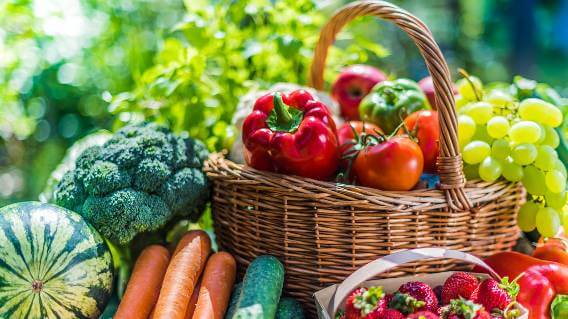
Summer is upon us, and grocery stores and farmers markets are filling up with plenty of vibrant and varied fruit and vegetable options. This is a wonderful time of year to try out some new healthy foods beyond the “usual suspects” of apples and bananas. Though, of course, those are delicious year-round parts of a balanced cancer diet.
Including summer foods in your mesothelioma diet — and trying to eat “in season” throughout the year — has benefits for both your personal health and the environment. Seasonal produce is often higher in nutrients than out-of-season options.
Locally grown food that is harvested in season hasn’t had to travel hundreds of miles to reach you, saving gas and other resources. In-season produce is often more affordable, too.
Fruit and Vegetable Choices for Mesothelioma Patients
If you have mesothelioma cancer, increasing your intake of produce is vital to building a healthy body. Research indicates that plant-based foods loaded with antioxidants and phytochemicals, such as fruits and vegetables, can help fight cancer.
In-season fruits and veggies will vary state to state, but there are guides that can help you discover what’s best in your state at this time of year. For example, Seasonal Food Guide is a helpful resource.
Visiting local farmers markets can be a fun, fresh-air outing and an opportunity to connect with farmers and get to know your local produce. Understanding more about your food options means you can plan healthy meals you’ll enjoy. The USDA Local Food Portal can help you find farmers markets near you.
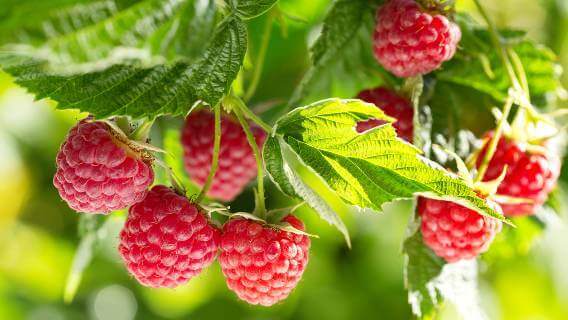
Recipes That Highlight Summer Foods
Summer food options include nutrient-rich berries, tomatoes and leafy greens. These provide essential vitamins such as potassium, minerals and complex carbohydrates that promote lung health.
The recipes that follow are simple and tasty options for you and your family.
Raspberries
Raspberries are not only high in antioxidants but are also a great source of vitamin C and fiber. They are a soft fruit that should be eaten within 48 hours, but you can always freeze extra fruit.
To freeze raspberries, place them in a single layer and freeze, then transfer them to a freezer-safe bag for storage. They are then perfect for throwing into a smoothie.
The following recipe also contains nectarines, which are available toward the later part of summer.
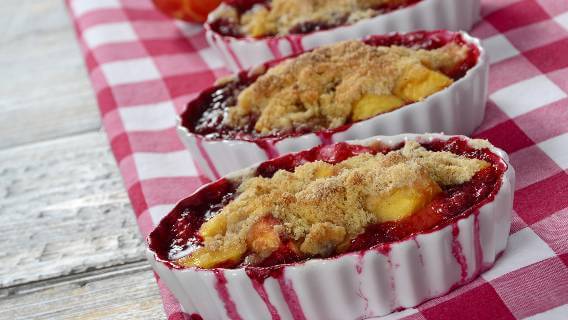
Nectarine and Raspberry Cobbler
- Canola oil cooking spray
- 6 cups thinly sliced nectarines (about 6-8 small)
- 2 cups fresh raspberries
- 1/2 cup sugar plus 1 tablespoon sugar, divided
- 1/2 cup whole wheat flour
- 1/2 cup unbleached all-purpose flour plus more for dusting
- 1/2 teaspoon ground cinnamon
- 2 teaspoons baking powder
- 1/4 teaspoon baking soda
- 1/4 teaspoon salt
- 2 tablespoons very cold unsalted butter, cut into small pieces
- 1/2 cup fat-free buttermilk
- Preheat oven to 450 F.
- Lightly coat an 8-inch square baking dish with canola oil spray. In a bowl, toss nectarines and raspberries with 1/2 cup sugar, using your hands to distribute the sugar evenly. Pour the fruit into a prepared baking dish, scraping the bowl with a rubber spatula.
- In a medium bowl, combine whole wheat flour, 1/2 cup all-purpose flour, remaining 1 tablespoon sugar and cinnamon, baking powder, baking soda and salt. Cut the butter into dry ingredients using a pastry blender or the tines of a fork. Work mixture with the tips of your fingers until grainy. Mix in buttermilk with a wooden spoon until soft, moist dough forms.
- Lightly dust the work surface with flour. Gently pat dough into a 1/4-inch-thick rectangle using the heel of your hand. Sprinkle dough lightly with flour if it becomes too sticky. Dip the rim of a 2-inch glass in flour and cut 9 rounds from the dough. Arrange rounds in 3 rows on top of fruit in a baking dish. Rounds should almost touch and should leave a border of fruit along the outer edges of the dish.
- Bake cobbler for 25-30 minutes, until biscuits are lightly browned and fruit is bubbling. Cool on a wire rack for 20 minutes and serve warm.
Recipe from American Institute for Cancer Research
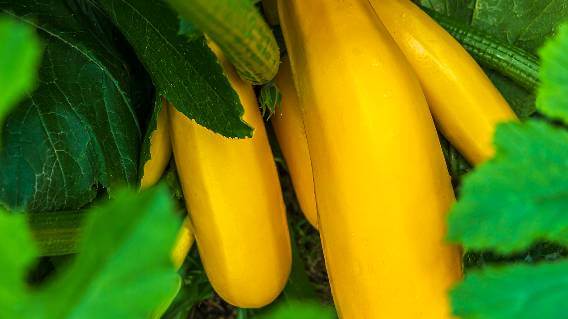
Summer Squash
Different types of squash are available year-round, divided into summer squash and winter squash. In the summer, squash varieties are light colored, have soft shells and are tender. A lot of nutrition is contained in the skin so don’t peel!
Fun fact: Squash is actually a fruit because it contains the seeds of the plant! Packed full of vitamins and minerals, summer squash is a must for your grocery list.
Squash Salsa
- 1 can black beans (rinsed)
- 6 tomatoes, seeded and diced (medium)
- 1/2 green pepper, seeded and diced
- 1 medium red onion (minced)
- 1 summer squash, medium (peeled, seeds removed, diced)
- 2 tablespoons red wine vinegar
- 1 teaspoon adobo seasoning (combination of garlic, coriander, salt and cumin)
- Lemon or lime juice (2 tablespoons, optional)
- 4 tablespoons mozzarella cheese, part skim
- Fresh cilantro or dried parsley (optional)
- Combine all ingredients except cheese. Let sit for 30 minutes.
- Spoon over tortilla chips, cooked rice or noodles.
- Top with grated, part-skim mozzarella cheese.
- Serve hot or cold.
Makes 4 servings
Recipe from USDA
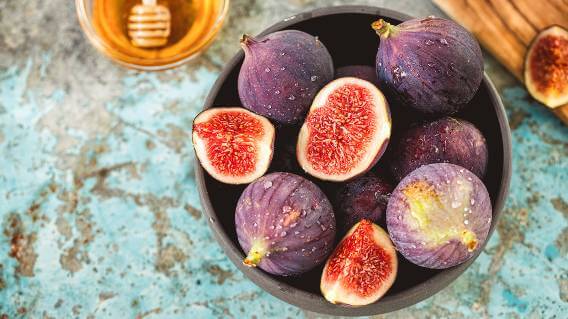
Figs
Fresh figs are currently in season and there are many varieties, depending on where you live. While the majority of figs are grown in California, local fruit can be found mostly at your local farmers markets.
Figs are highly nutritious and can also be bought dried. This makes for a convenient snack, especially if you are on the go with appointments. For a quick boost of energy, this fruit is worth a try!
Pear Salad with Mint and Figs
- 2 tablespoons extra virgin olive oil
- 1/2 tablespoon balsamic vinegar
- 1/2 tablespoon fresh squeezed lemon juice
- 1/2 teaspoon honey
- 1/8 teaspoon salt
- 1 small shallot, minced
- 1 small head Boston lettuce, washed and torn
- 1/4 cup chopped fresh mint
- 1 ripe Bosc pear, quartered
- 8 figs (fresh or dried), cut into 4 slices each
- Freshly ground black pepper
- In a small bowl, whisk together oil, vinegar, lemon juice, honey and salt.
- Stir in shallot and set aside.
- To prepare salad, arrange lettuce on a serving platter.
- Sprinkle mint over lettuce.
- Cut each pear quarter into 4 slices and arrange over mint.
- Sprinkle with dried figs.
- Stir dressing and pour over salad. Toss to coat.
- Serve garnished with freshly ground black pepper.
Makes 4 servings
Recipe from American Institute for Cancer Research







